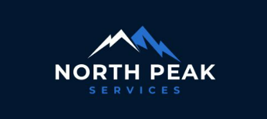Why Cash Flow Forecasting and Monitoring Might Be the Most Important Thing You’re Not Doing
If you’ve ever found yourself wondering “Where did all the money go?”, you’re not alone. It’s common for business owners who are busy growing sales, adding clients, and doing everything “right,” to somehow still feel like they’re struggling just to keep up.
Nine times out of ten, the culprit is poor cash flow management. Not profits. Not pricing. Not marketing. Just plain old cash, when it comes in, when it goes out, and how predictable (or unpredictable) that flow really is.
So let’s dive into the one-two punch of managing your money more effectively: forecasting and monitoring your cash flow. Whether you’re running a new side hustle, growing a business, or running a multi-location operation, understanding these two tools can save your sanity and possibly your company.
What is Cash Flow Forecasting?
At its simplest, cash flow forecasting is the act of predicting how much cash your business will have in the future. Think of it like checking the weather before heading out. You might be wearing shorts today, but if there’s a storm coming next week, you’d better pack an umbrella, or at least budget for one.
Forecasting expands your visibility. It helps you anticipate whether you’ll have enough cash to cover payroll, inventory, rent, marketing, or that unexpected repair bill no one saw coming. In fact, more importantly, it gives you lead time. It lets you make decisions today, based on tomorrow’s reality.
How Far Should You Forecast?
The answer depends on the nature of your business. Most small businesses start with a 13-week cash flow forecast. This short-term view gives you a rolling picture of the next three months, a sweet spot where you can anticipate needs without feeling overwhelmed by far-off hypotheticals.
You can also build out longer-term forecasts (6 months, 12 months, or even multiyear projections) once you get comfortable. These are especially useful for planning big purchases, growth strategies, or hiring timelines.
But start short and keep it simple.
What Goes Into a Forecast?
The basic formula looks like this:
Beginning Cash
Expected Cash Inflows (sales, loans, accounts receivable, etc.) – Expected Cash Outflows (payroll, rent, supplies, taxes, loan payments, etc.) = Ending Cash Balance
Pretty straightforward, right? The key is estimating your inflows and outflows as accurately as possible.
Here’s a quick cheat sheet:
Inflows include customer payments (from invoices or point-of-sale), loans, investments, tax refunds, and other sources of cash.
Outflows include bills, payroll, loan payments, taxes, software subscriptions, rent, insurance, marketing, and inventory purchases.
And yes, if you take a draw or distribute profits, that counts as an outflow too.
The more detail you can provide in your categories, the better. A vague forecast is about as useful as a foggy windshield.
How to Build a Forecast
You don’t need fancy software to get started. A well-organized spreadsheet can do the trick. There are also affordable tools like Float, Pulse, and even QuickBooks that can automate a lot of the process.
Start here:
List your expected inflows by week. If you invoice clients, consider when those payments actually hit your account (not just when the invoice is sent).
List your expected outflows by the due date. Group fixed expenses (like rent) and variable ones (like materials or labor).
Calculate your weekly and cumulative cash position so you can spot any dips below your minimum desired balance.
Review and update regularly. This is not a set-it-and-forget-it exercise. You’ll want to review your forecast daily, weekly or biweekly and adjust based on actual results and new information.
Now Let’s Talk About Monitoring
If forecasting is looking ahead, monitoring is checking the rearview mirror. It’s tracking what actually happened and comparing it to what you thought would happen, and then asking why.
Did a client pay late? Did you forget to account for a software renewal? Did sales spike unexpectedly? Monitoring reveals the story behind the numbers.
More importantly, it allows you to fine-tune your forecast over time and become increasingly accurate in your predictions.
It’s also where most small businesses fall short. They might build a forecast once and then never look at it again. But the magic happens when you compare your forecast to the actual for each week, make adjustments as needed, and start recognizing the patterns that govern your cash cycle.
Why This All Matters
Too many small business owners run things by gut instinct, and sometimes that works. But when your cash balance drops suddenly, your gut won’t pay the rent. Your team doesn’t get paid with vibes.
Forecasting and monitoring help you:
Avoid overdraft fees and late penalties.
Plan purchases and investments with confidence.
Make decisions about hiring or expansion from a position of clarity.
Reduce stress (seriously) by knowing what’s coming.
Have better conversations with your accountant, bank, or potential investors.
Have sufficient cash to cover expected and unexpected business expenses, without having to take on debt.
In short, it turns money management from a source of anxiety into a place of control.
It All Boils Down to This
Managing cash flow doesn’t require an MBA or a full-time CFO. But it does require you to slow down just long enough to look forward, look back, and stay on top of what’s happening right now.
Start small. Forecast the next 4–6 weeks. Track your actuals. Adjust as you go. Remember, this isn’t just a financial exercise. It’s a leadership skill. One that gives you the confidence to grow your business with your eyes wide open.
Because at the end of the day, it's not just about how much money flows in, it's about how much you hold onto, when it lands in your account, and the choices you make with that money.

